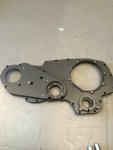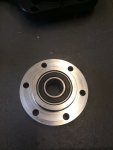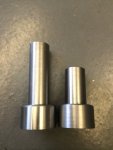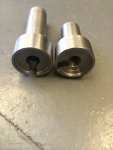Your absolutely correct I remember telling Richard about designing some drill and tap guides when I did mine to make it easier for those who weren't machinist. I am not sure when he implemented it but it was a good idea. They were not available when I did mine and I wish I would have took the time to make some. Instead like a machinist I step drilled mine to aid in keeping alignment, and bought a starting tap to help before I went with the plug and bottoming supplied with the kit. (all three taps are better when drilling and tapping a blind hole) Of course by that time I had been running machines for 32 years and had a good idea on what to do. Still I maintain that no matter how much experience one has without guides there is still a amount of luck involved when using a hand drill. Just as important is cleaning out the chips while your are tapping so you get as deep as you drilled. And you are right proper cutting fluid is the key to not tearing threads which will weaken them or change the class of fit. ( I went for a 3B fit)
Or at least that's my excuse

As stated in my above post and I will say it again in a different way. One should only build the engine within the ability of being able to work on it if you have a burp. By this I mean if your across the country from where your Forced Air kit has been built and lack the ability to sort things out you should realize how expensive it would be to ship it clear across the country to have it sorted out. The same goes for a NA kit its just forced air is a little more tricky to sort out then NA. Either way this should be a consideration no matter what the build it.






